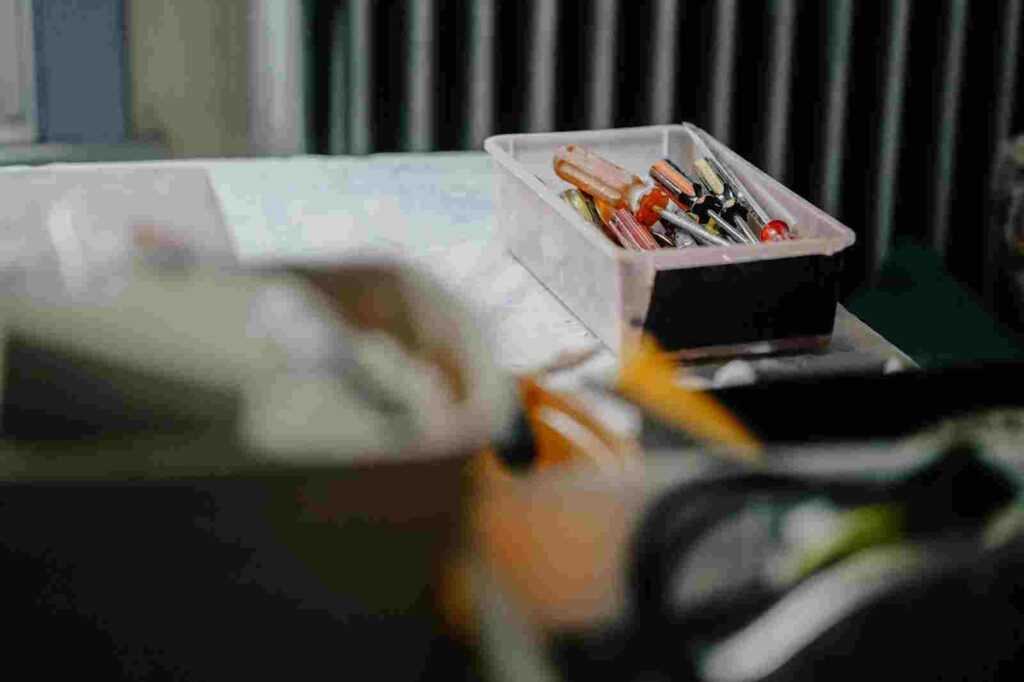Buying a house in today’s market can already get pretty expensive, with hefty down payments, soaring property prices, and all the hidden costs that come along. But that’s just the beginning.
Once you finally settle into your dream home, the last thing you want is to be hit with unexpected and expensive repairs. Suddenly, that cozy haven you envisioned turns into a never-ending stream of repairs, draining both your energy and your bank account.
In this blog, we’ll explore nine of the most expensive home repairs and equip you with valuable insights and practical tips and tricks on how to dodge those financial bullets.
Let’s dive in!

Photo by Karl Solano on Unsplash
- Roof Replacement: Protecting Your Overhead Shield
When it comes to inclement weather and the elements, your roof is your home’s first line of defense. Over time, it can deteriorate due to weather conditions and a lack of maintenance, leading to leaks and costly repairs.
To avoid this, make sure to inspect your roof regularly for damaged or missing shingles and clear debris to prevent clogged gutters. Additionally, professional roof inspections every few years can help identify potential issues early on.
- Foundation Problems: A Solid Base Matters
A compromised foundation can result in major structural issues and hefty repair bills. To avoid foundation problems, ensure proper drainage around your home to prevent water accumulation near the foundation.
Regularly inspect for cracks, settlement, or unevenness in walls and floors. If you notice any signs of foundation issues, consult a professional immediately to address them before they worsen.
- Plumbing Nightmares: Preventing Leaks and Burst Pipes
Leaky pipes and burst plumbing can wreak havoc on your home, causing water damage and expensive repairs. Insulate exposed pipes during cold weather to prevent freezing and potential bursting.
Regularly inspect your plumbing system for leaks, drips, or signs of water damage. Timely repairs and proactive maintenance can save you from plumbing nightmares.
- Electrical Hazards: Safety First
Electrical issues pose a serious threat to your home’s safety and can lead to fires or electrocution. To prevent electrical hazards, ensure that your home’s electrical system is up to code.
Avoid overloading circuits and regularly check for flickering lights, sparking outlets, or circuit breakers that frequently trip. If you’re uncertain about electrical repairs, hire a licensed electrician for professional assistance.
- HVAC System Breakdowns: Keeping the Climate Under Control
An excellent HVAC system is crucial for maintaining a comfortable home environment. Regularly change air filters, clean ducts, and schedule professional HVAC maintenance to prevent breakdowns.
Neglecting routine maintenance can lead to costly repairs or even premature system replacement. Remember, an efficiently running HVAC system not only saves money but also improves indoor air quality.
When seeking HVAC services, it’s best to hire professionals who leverage cutting-edge technology to design HVAC systems that optimize comfort, energy efficiency, and indoor air quality, ensuring a well-maintained and comfortable home environment while minimizing potential breakdowns and costly repairs.
- Pest Infestations: Protecting Your Home from Unwanted Guests
Pests can cause extensive damage to your home’s structure and create unhygienic living conditions. To avoid infestations, seal any cracks or gaps in your home’s exterior to prevent entry points.
Keep your home clean, regularly dispose of trash, and eliminate standing water sources. If you notice signs of pests, such as droppings or damage, consult a professional pest control service to address the issue promptly.
- Water Heater Failure: Don’t Get Left in the Cold
A malfunctioning water heater can leave you with cold showers and the need for an expensive replacement. Extend the lifespan of your water heater by flushing it regularly to remove sediment buildup.
Inspect for leaks or signs of corrosion, and consider installing a water heater blanket for insulation. Being proactive with maintenance can help you avoid unexpected water heater failures.
- Clogged Drains: Keep the Water Flowing
Clogged drains can lead to water backups, pipe damage, and costly plumbing repairs.
Prevent clogs by using drain guards to catch debris, avoiding pouring grease or large food particles down the drain, and periodically flushing drains with hot water and vinegar. If you encounter persistent clogs, use a plunger or a drain snake to clear the blockage before it becomes a more significant issue.
- Mold Remediation: Moisture Management Matters
Mold growth not only damages your home’s structure but also poses health risks to you and your entire family. To prevent mold, control moisture levels in your home by addressing leaks or water intrusions promptly.
To minimize humidity, use exhaust fans in the kitchen and bathroom. Regularly clean and dry areas susceptible to moisture like your bathrooms and basements. If you detect mold, seek professional assistance for proper remediation.
DIY Repairs: Empowering Your Inner Handy-Person
If you’re part of the digital workforce that can work anywhere, why not consider incorporating DIY repairs into your work-life balance routine? Taking on minor fixes yourself can not only save you money but also provide a fulfilling and empowering experience. Here are a few DIY repair tasks that you can tackle with confidence:
- Basic plumbing repairs like fixing leaky faucets or replacing shower heads.
- Patching small holes in drywall or repainting scuffed walls.
- Installing energy-efficient lighting fixtures or ceiling fans.
- Upgrading cabinet hardware or replacing outdated kitchen faucets.
- Repairing squeaky floors or replacing damaged floor tiles.
- Maintaining your garden or yard by mowing the lawn and trimming shrubs.
- Installing weatherstripping to improve energy efficiency.
- Replacing worn-out door handles or locks.
- DIY painting projects to freshen up your living spaces.
Remember, when it comes to DIY repairs, start small and gradually build up your skills and confidence. However, if a repair task seems beyond your expertise or requires specialized knowledge, it’s always wise to call in a professional.
Final Thoughts
By implementing the preventive measures discussed in this article and considering DIY repairs from time to time, you can significantly reduce the likelihood of encountering expensive home repairs. From maintaining your roof to safeguarding your foundation and HVAC system, proactive care and timely action are key.
So, equip yourself with knowledge, roll up your sleeves, and protect your home while enjoying the satisfaction of a job well done. Your home—and your wallet—will thank you!

